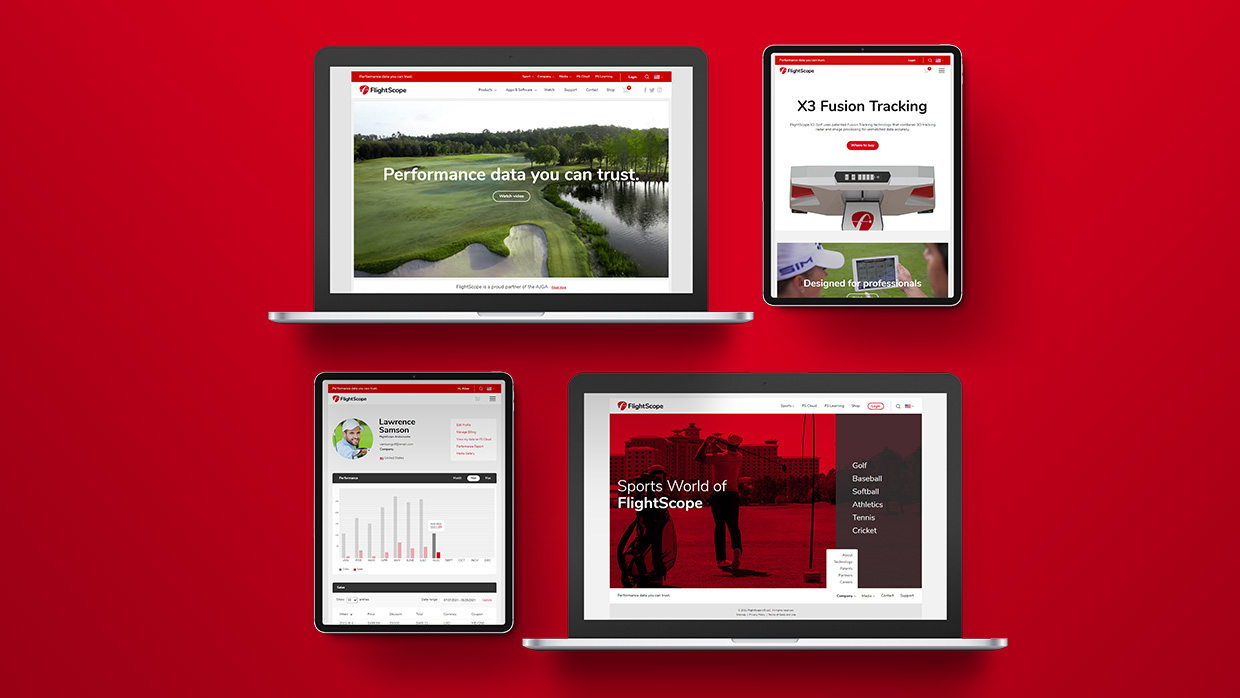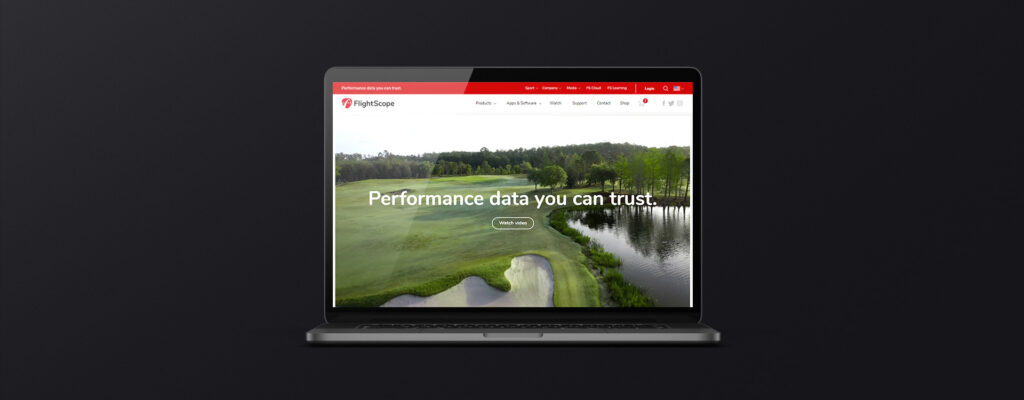
Sports World of FlightScope
My Contribution
UX, UI, Ecommerce
Public Launch
Shopify: 2022
Brief
Unify and modernize FlightScope web properties to bring all sports and products under one “Sports World” umbrella with ecommerce, product support, and media as an increased focus.
Overview
The longer I worked at FlightScope, the more outdated and scrambled our web properties became. Many were confusing, misleading, and expected information and functionalities were severely lacking for a company that boasts modern technology offerings. As a work in progress, the ultimate goal was to bring all sports, portals, shops, and support under one “Sports World of FlightScope” umbrella.
First, I set out to bring our ecommerce into the modern era with a fully customized storefront with Amazon Marketplace channels and email marketing integration. Meanwhile, I push the remainder of the project past the content planning stage and into the second design evolution focusing on more details of the customer experience while working with developers to ensure CRM, finance, support, automated customer communication, and FlightScope hardware integrations are flexible and efficient.
Main Goals
I know the large goal is to overhaul all web properties under the FlightScope umbrella – which includes static sales sites, ecommerce, and sport-specific data tracking applications. We decide to take this on one vertical at a time, keeping the initial design systems in place for a cohesive experience. It is important for information to be organized and easy to manage for both our customers and our staff. The design framework has to be flexible as more sports are being added to the product lineup.
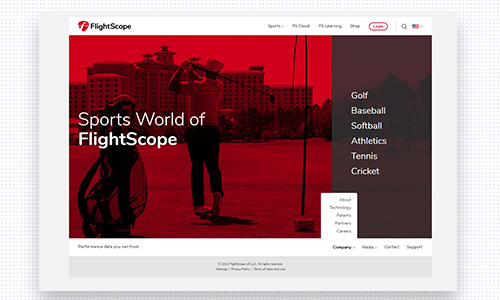
Encompass all Sports
FlightScope maintains a significant presence in golf, baseball, and softball while expanding into athletics and tennis – and it’s important for users to see the broad reach while still being able to navigate quickly to the information they seek.

Modern Ecommerce
Consumer product sales quickly became one of the largest income sources and priorities for the company, and the original shopping cart was not built to withstand the traffic that brought over 60,000 sales in 2020 alone.
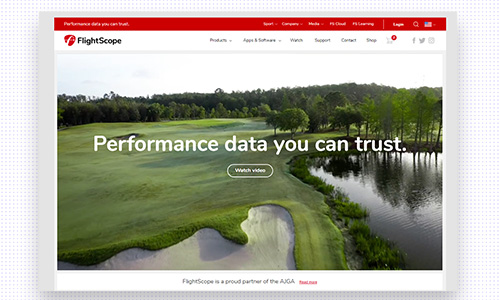
Sales & Marketing Vehicle
The main sport pages of the site redesign will be geared towards information distribution and lead generation. Products must have unique URLs for ad linking and audience targeting.

Continued Experience & Support
The FlightScope experience only begins at the point of sale, and customers must have access to the training and support required to be successful with our line of hardware. User portals and a knowledgebase of articles and videos will help ease strain on a busy Customer Care team.
Biggest Challenges
Current FlightScope web properties span a dozen domains and were built independently using different backend systems – some even custom and proprietary to the contractors hired to build the products. Aside from trying to meet the expectations of our marketing, sales, support, finance, production, and shipping teams, it’s been critical that I work with the web developers through early stages of research and planning to make sure all needs are met. The list of “must-haves” from each team is quite extensive after years of band-aid solutions and inefficient processes.

Futureproofing
As FlightScope expands into additional sports and continues to release new hardware, software, and applications for each, it’s important that the site design be able to accommodate anything that might be in the pipeline.
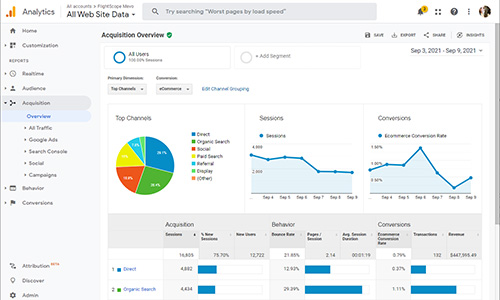
Restructure without Losing Traffic
Pulling content from so many outlets needs to be seamless to the user and old, yet popular, links should keep a majority of their content intact to limit the loss of SEO gains seen in recent years with our entrance to the consumer space.
Understanding the Users
Our audience is not unfamiliar to any company looking to bolster their growth in marketing, ecommerce, and education efforts. The key for me will be implementing design choices that target sport-specific customers looking for product and company knowledge.

Customer Lead
I want to…
- Learn more about the company
- Get product information or demos
- Purchase a product
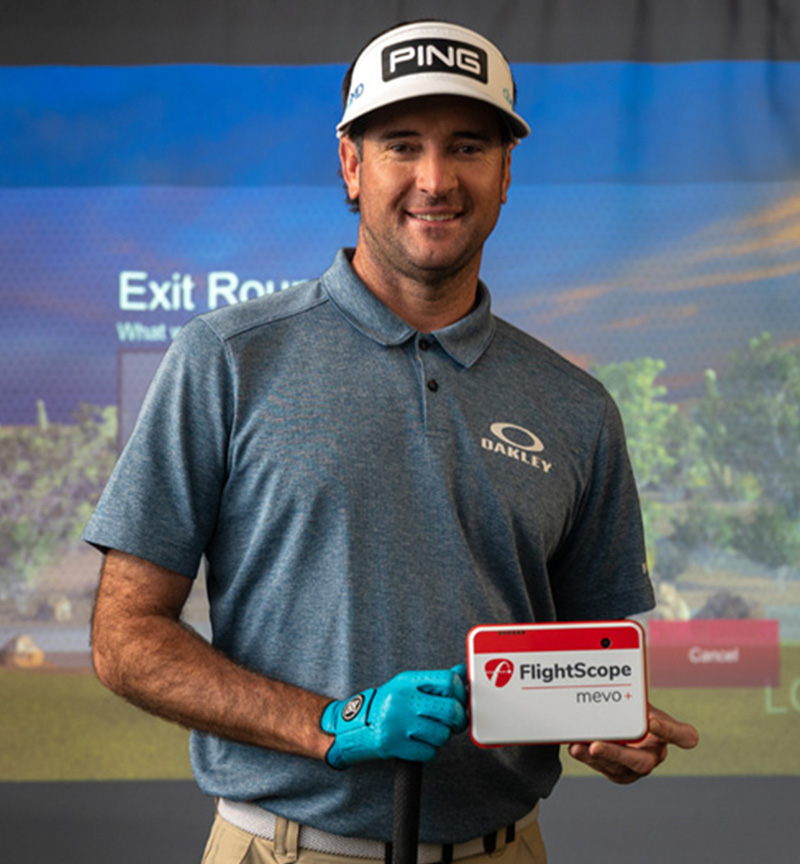
Existing Customer
I want to…
- Review my FlightScope data
- Seek support for hardware and apps
- Research additional products
- Communicate with coaches or players

Media
I want to…
- Learn more about the company
- Download assets for marketing and PR
- Stay informed on company and product news

Partner / Ambassador
I want to…
- Promote and sell the product
- Get sales and commission reports
- Stay informed on company and product news
Site Structure
I broke down the main verticals of the existing web properties so we wouldn’t lose track of the larger picture when diving into more manageable development chunks. This helped our principals decide what would get priority on the timeline. Of course, we started with the shop vertical as that was a severe trouble spot that wasn’t providing a trustworthy experience to our customers.
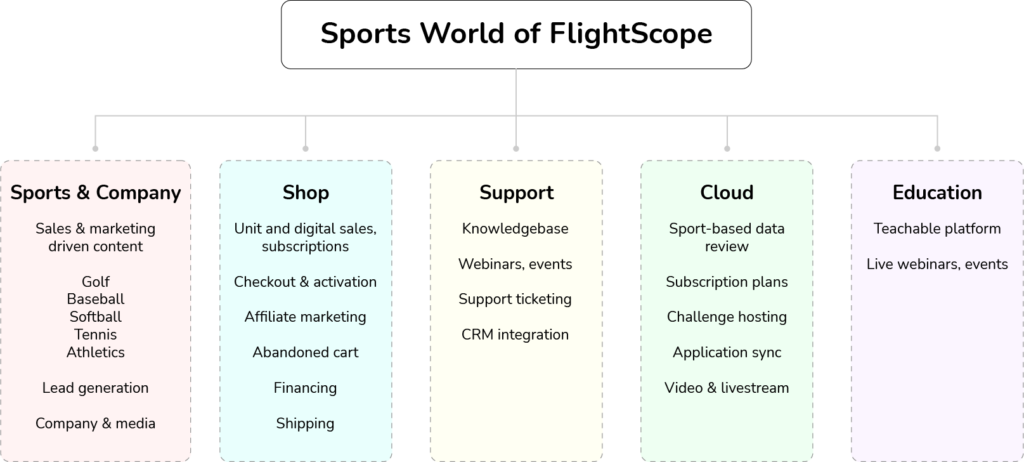
Shop Research
Developers provided me a list of ecommerce backend solutions they considered to be strong at providing the features we were looking for out of the box with flexibility for customization to suit our needs. I built sample shops on these platforms and provided a small testing base with the ability to navigate the simple sites for feedback. Feedback came from sales, marketing, finance, shipping partners, and trusted customers.
Shopify was unanimously selected by all departments due to its impressive integrations, user-friendliness, scalability, and potential for customization. Finance was particularly happy with the instant reporting, Quickbooks integration, and payment gateway selections – and it’s always important to stay in their good graces (wink).

✔ Pros
- Familiar to our company in previous use
- Extensions for everything
- Full customization possible
✘ Cons
- Dependent on WordPress backend
- Reporting, financing, and shipping more difficult to monitor and support
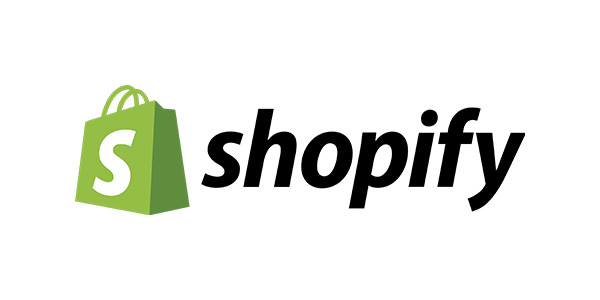
✔ Pros
- Excellent usability and integrations
- Easy expansion to multiple shops or secondary marketplaces
- Familiar cart experience that is trusted worldwide
✘ Cons
- Proprietary development language
- More expensive to run and expand

✔ Pros
- Free, open-source
- Allows for multiple storefronts
- Built-in affiliate system
✘ Cons
- Geared towards shops with a large product catalog
- Fewer options for analytics and reporting
Design Planning
Before diving into the Shopify theme design, I want to settle on a solid design and navigation structure that will be used across the entirety of the Sports World verticals. Once these decisions are made I can make swift decisions about the theme and content organization that will repeat throughout.
Site elements are intended to be repurposed across multiple products and sports, so more focus went into creating reusable components over designing detailed content pages. Most of my energy was spent planning the navigational structure of the Sports World – allowing users to seamlessly switch between static marketing pages, ecommerce, the Cloud database, customer support, and e-learning platform, all maintained for several sports.
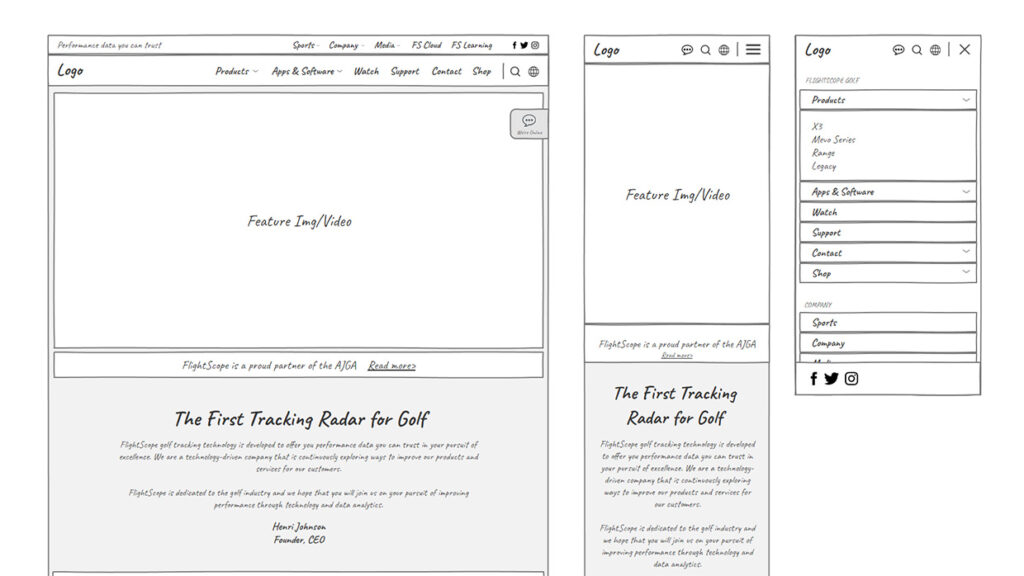
I start with very simple wireframe presentations to easily get and respond to feedback about content placement and navigation structure

I create a few very quick mockups of one page to send out for feedback on the presentation of simple navigation, images, and headline text
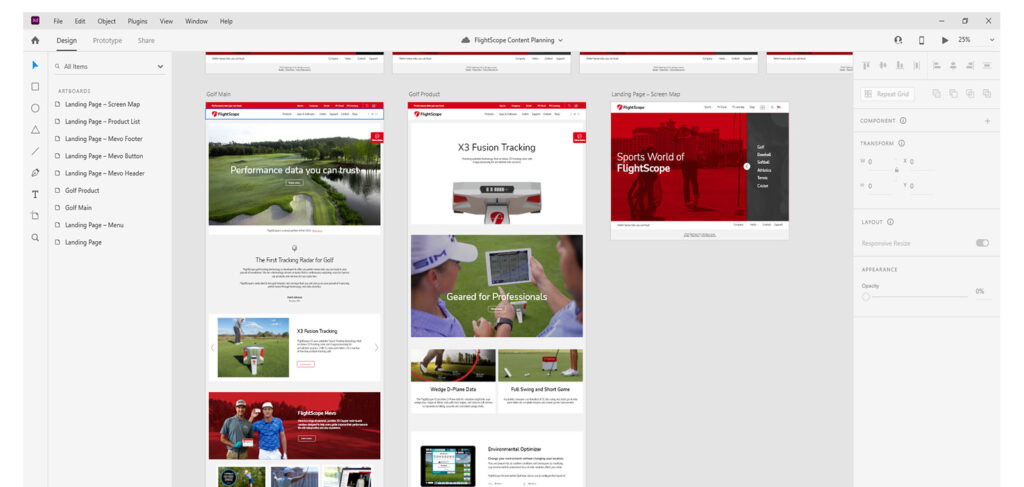
I move into Adobe XD for C-level presentation purposes, doing very basic structure planning using existing assets in a modern design theme
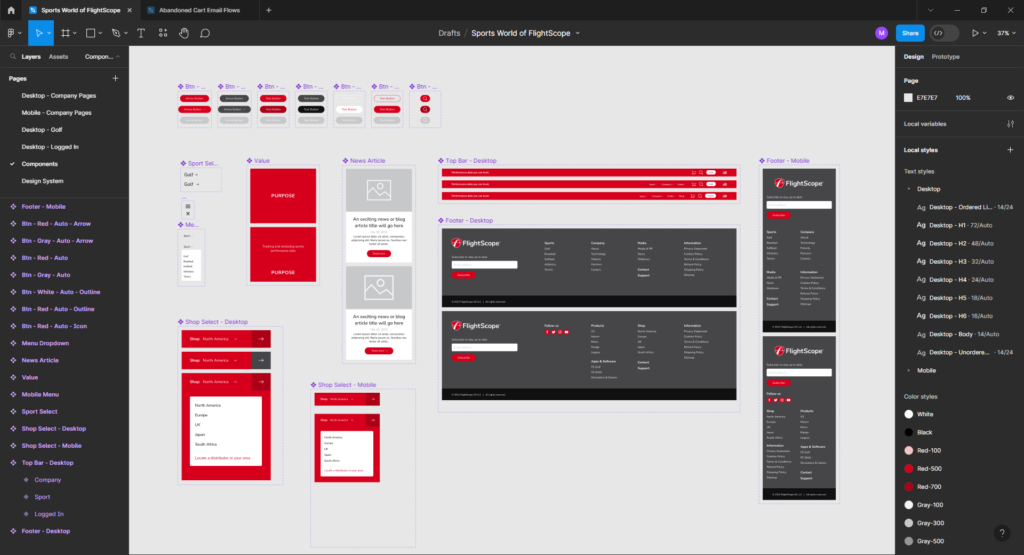
Final page and component design is done in Figma, which gives developers improved access and communication
Shopify Design
After settling on a design theme for the Sports World overhaul, it’s time to narrow in on the first vertical – our shop. Taking these assets, I dedicate my time to theme customization, coding reusable elements in Liquid, product page design, article and blog customization, email marketing design, and integrations for shop management.
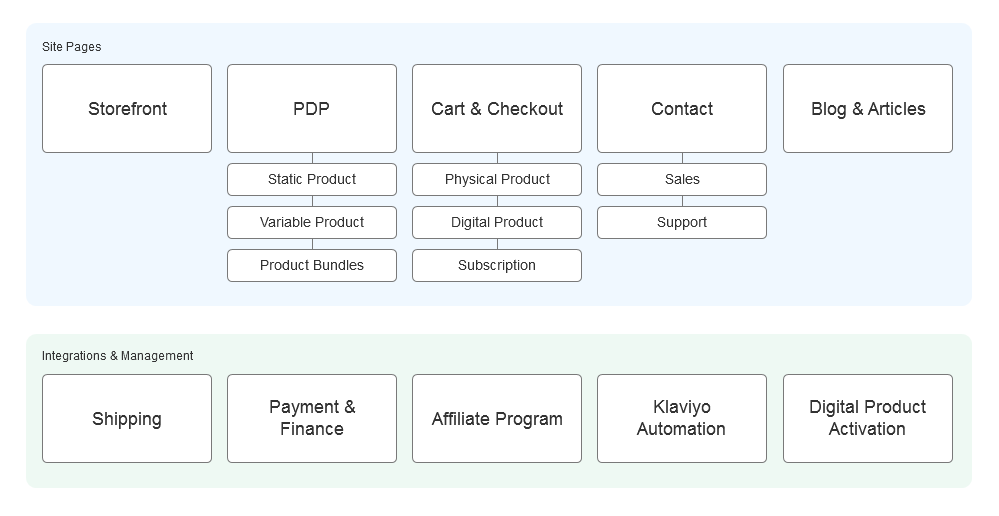
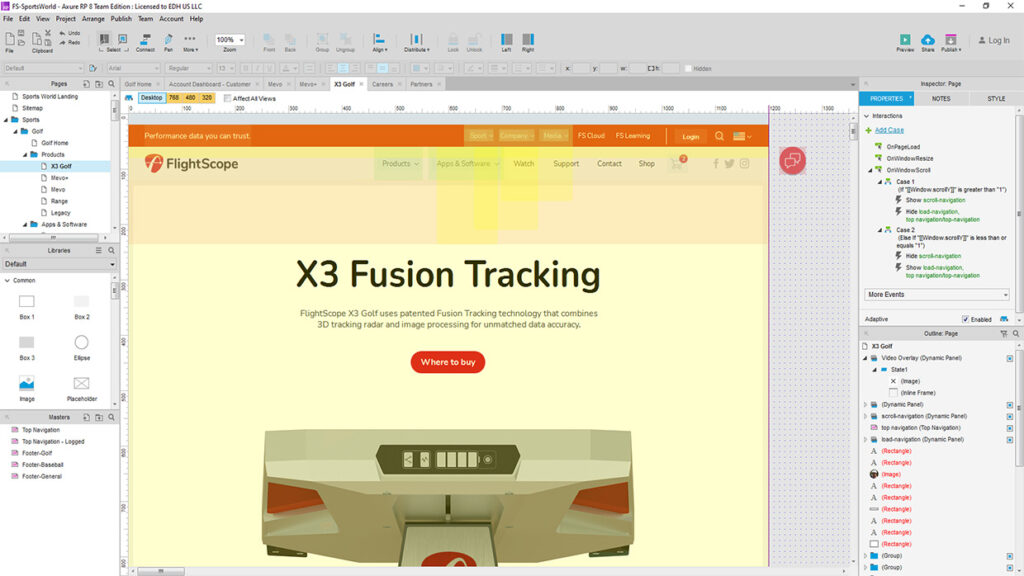
I start building the shop prototype in Axure for more detailed interaction design representation using elements that were specified during the design planning stage
Using the Shopify Dawn theme, I started manipulating the template, adding PDPs, articles, and support pages, and moving reviews and content from the previous shop platform
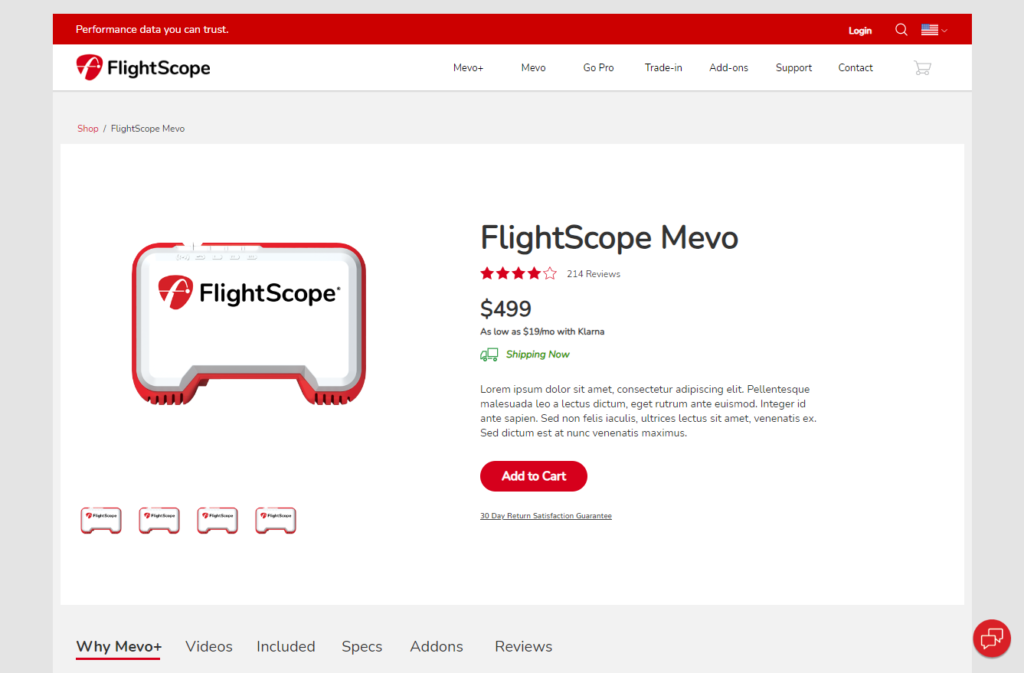
Integrations
After months of design and development work, the Shopify storefront launched in January 2022, mere months after the FlightScope rebrand was introduced to the public. This was part of our developing brand story focus, offering a more trustworthy experience for our customers, and showed instant success. The transition was seamless and our first consumer product sales occurred within minutes of the launch – which was exciting to watch unfold live in the Shopify Manager.
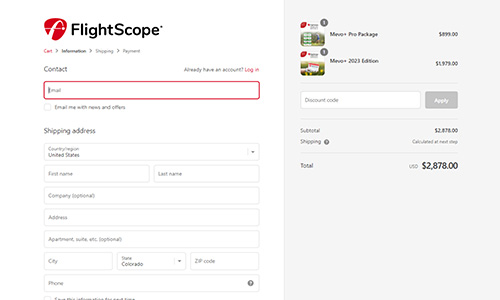
Sales Boosters
I integrated a number of apps to allow customers to save money with a variety of product bundles, automatic discount codes, and discounted addons in their cart – boosting sales over several months.
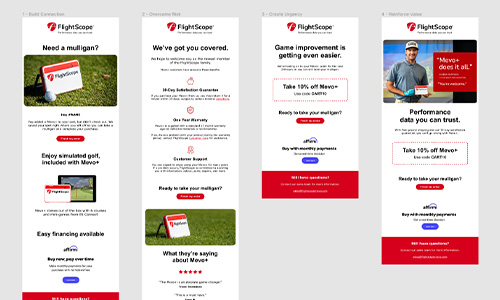
Automated Email Marketing
Klaviyo gave me another sales boost with automated checkout and shipping notifications for customers. Abandoned cart reminder and offer flows were successful at bringing customer leads back to purchase.
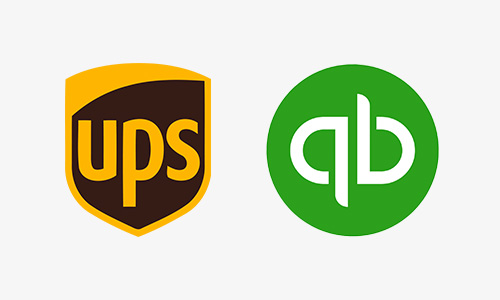
Shipping & Finance Integrations
Integrating UPS, Quickbooks, resellers, and distributors into Shopify made the work of our internal teams significantly easier.
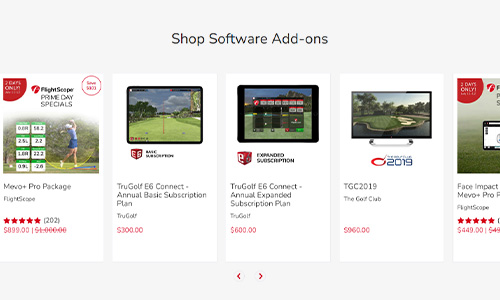
Digital Product Sales
The platform allowed expansion beyond physical products into digital offerings that automatically unlocked more application features for buyers.
Shop Launch
After months of design and development work, the Shopify storefront launched in January 2022. This was part of our developing brand story focus, offering a more trustworthy experience for our customers, and showed instant success. The transition was seamless and our first consumer product sales occurred within minutes of the soft launch – which was exciting to watch unfold live in the Shopify Manager.

Process Review
1
Early research and platform testing was crucial to the success of the store launch, especially with a relatively short development timeline. Decisions were informed and came in quickly.
2
Because the process happened over months and even years, I found myself doing portions of the design work in a variety of software that, in the future, I would limit.
3
The Shopify platform gave me the ability to quickly swap assets on the storefront and PDPs when the marketing team wanted to change direction.
4
The FlightScope rebrand, which happened along with the shop design process, gave me some freedom to successfully present more modern ideas that were previously unfamiliar to the team.
5
I gained a significant amount of experience in Shopify’s Liquid language through theme customization, and am hopeful to use this knowledge in future projects.
Results
This is a years-long undertaking, but the successful launch of the shop is a good first step for the company and users. It was thrilling to see how quickly customers adapted to the experience, how our support staff was able to expand their operations with the platform simplicity, and how excited the developers are to continue forward progress.
Before my departure, I was deep in the development research process for future verticals, and high fidelity prototypes were circulating our testing channels for final feedback. Design specifications were completed with minor adjustments expected as development teams chose their frameworks. There was no specified timeline for launch, however, I’m excited to monitor where they take the web properties and brand going forward.
